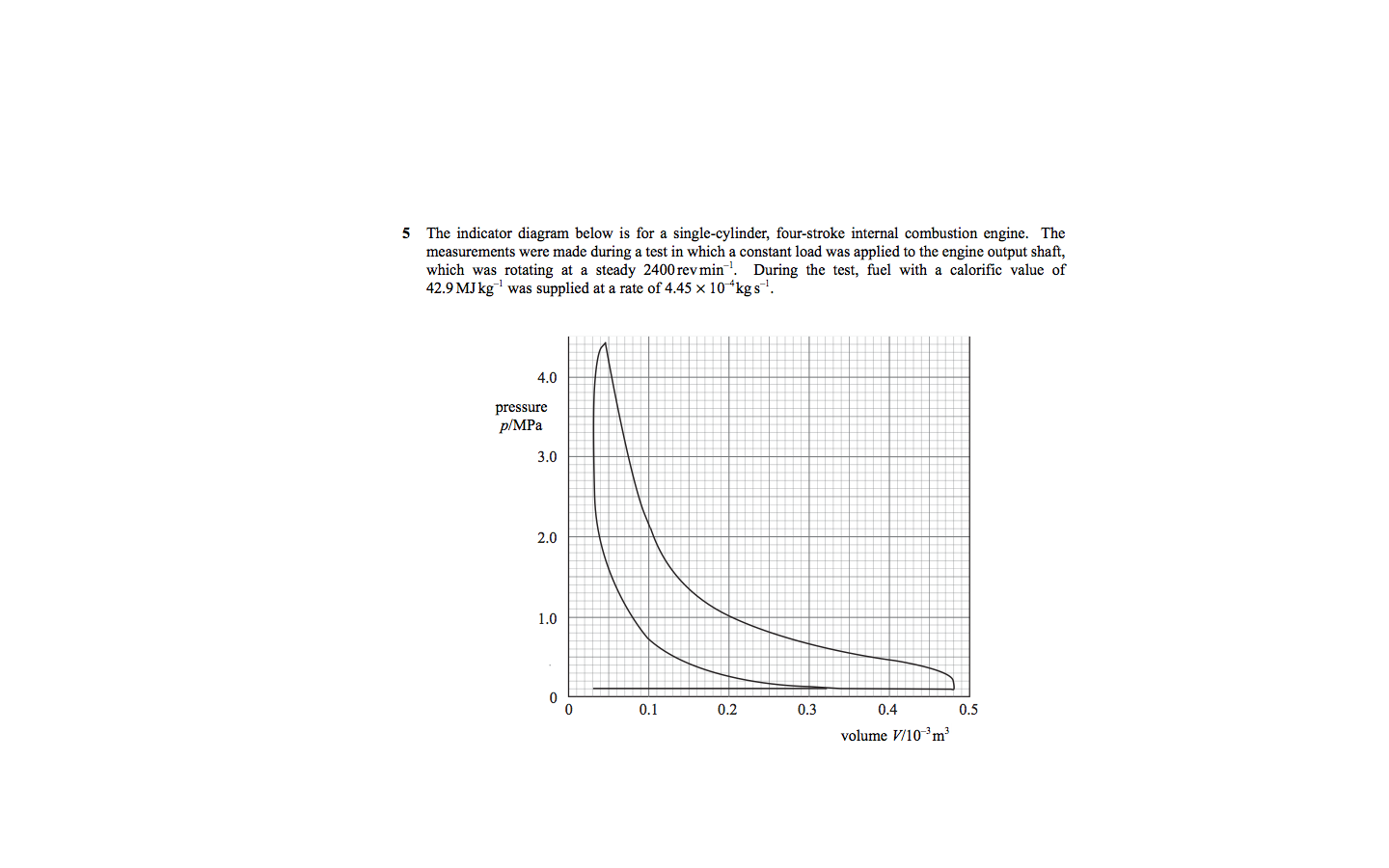PHYA5 ~ 20th June 2013 ~ A2 Physics
Scroll to see replies
Original post by bugsuper
Don't forget the Specimen papers which are also available 

Indeed!
Original post by Pinkhead
Here are more questions for you from the old spec for astro (there are like 75 pages of questions).
I have other topics too. If people ask me for them, I will upload them.
I have other topics too. If people ask me for them, I will upload them.
Legend man! Thanks a lot for those. Are you doing astro as well? And are those questions a culmination of all of the relevant ones for the new spec or should we still look out for ones that are not relevant?
Original post by Jack93o
theres exam style question for astrophysics? where?
Here
 (i'm pretty sure these were on the AQA website, but came across them a while ago).
(i'm pretty sure these were on the AQA website, but came across them a while ago).Exam Style Questions.pdf
Exam Style Questions (Answers).pdf
Original post by kingm
Legend man! Thanks a lot for those. Are you doing astro as well? And are those questions a culmination of all of the relevant ones for the new spec or should we still look out for ones that are not relevant?
Legend man! Thanks a lot for those. Are you doing astro as well? And are those questions a culmination of all of the relevant ones for the new spec or should we still look out for ones that are not relevant?
I don't do astro but my school gave us these documents and I was told that they are all relevant to the title of the document. I am doing the turning points document now and they all seem to be relevant so I assume that's true for astro too.
Original post by Pinkhead
I don't do astro but my school gave us these documents and I was told that they are all relevant to the title of the document. I am doing the turning points document now and they all seem to be relevant so I assume that's true for astro too.
Good stuff. Really appreciate it because I was worrying about what to do once i'd done the 3 papers, specimen and end of unit stuff. Much obliged.
Original post by Jack93o
astrophysics related, how would you define 'normal adjustment'?
btw, chromatic aberration affects converging lens, NOT cassegrain reflecting telescope, right?
btw, chromatic aberration affects converging lens, NOT cassegrain reflecting telescope, right?
I don't think you get chromatic aberration with a reflecting telescope, no.
Normal adjustment is when the telescope length is the sum of the focal lengths of the objective and eyepiece lenses, when they have the same focus, and when the image is formed at infinity
Original post by Lucy-1995
What paper was this question from, or was this the whole question? I can't figure out where you got any of the numbers from on the first line of your equation?!
'390.406 + 1.675 - (149.357 + 239.056 + 2x1.675)' why is that so??
Really confused! I hate all the mass defect/binding energy questions with a passion
'390.406 + 1.675 - (149.357 + 239.056 + 2x1.675)' why is that so??
Really confused! I hate all the mass defect/binding energy questions with a passion

The information was provided in the question, don't fret. In the exam, all the nuclei masses will be given to you

Original post by bugsuper
I don't think you get chromatic aberration with a reflecting telescope, no.
Normal adjustment is when the telescope length is the sum of the focal lengths of the objective and eyepiece lenses, when they have the same focus, and when the image is formed at infinity
Normal adjustment is when the telescope length is the sum of the focal lengths of the objective and eyepiece lenses, when they have the same focus, and when the image is formed at infinity
nice and concise

In terms of section 9, what exactly is a stable isotope?
Posted from TSR Mobile
Posted from TSR Mobile
Original post by cooldudeman
One that does not undergo radioactive decay.
Original post by mrwho

Okay, so this is quite a simple question really for applied physics. The one thing I don't get is why for the final question, you are supposed to halve it because 'each two revolutions produce 350J'. How does the area signify two revolutions, and why does the indicated power use two revolutions instead of one?
Okay, so this is quite a simple question really for applied physics. The one thing I don't get is why for the final question, you are supposed to halve it because 'each two revolutions produce 350J'. How does the area signify two revolutions, and why does the indicated power use two revolutions instead of one?
Could someone help?
What do we need to know about electron diffraction and nuclear density???
Posted from TSR Mobile
Posted from TSR Mobile
Original post by mrwho
Could someone help?
Input power is the power you get from the fuel, which is the calorific value * rate of fuel flow
Indicated work per cycle is the work done per cycle, which is just the area of the loop. What the enging should give you ideally, you really wont have your output=the indicated workdone usually though.
Indicated power is the power produced by the whole cycle, the formula for this is on the formula sheet, its something like. Area of the loop*number of cylinders*rotations per second
(edited 10 years ago)
Original post by posthumus
A little help here guys please 

I keep getting half the value for 1st one... also what exactly is r0 & R ? Difference ?
Thanks in advance!

I keep getting half the value for 1st one... also what exactly is r0 & R ? Difference ?

Thanks in advance!
R is the radius, r0 is a constant.
For the first one, did they give you the mass of a gold nucleus? If not, you'd have to work out the mas yourself by adding up proton and neutron masses, then dividing that by 4/3pi r^3.
(Mass comes to around 3.27x10^-25)
Original post by Bobilina
Well this can't go as bad as Unit 4 did for me both in January and on Thursday. Plus i quite like the turning points section, minus relativity.
I hate the light topic. I hate huguan
Posted from TSR Mobile
Original post by cooldudeman
*huygens

Original post by ladynova
Just a quick question, can a virtual image only be formed when it image appears before the object? Because the definition says "a virtual image is formed where the light rays appear to come from a different point in space"
I'm pretty sure that's right. Virtual images only exist because the eye "traces back" the light rays which appear to come from some distance behind the actual object.
http://www.leydenscience.org/physics/electmag/image_des.htm
Original post by posthumus
A little help here guys please 

I keep getting half the value for 1st one... also what exactly is r0 & R ? Difference ?
Thanks in advance!

I keep getting half the value for 1st one... also what exactly is r0 & R ? Difference ?

Thanks in advance!
Okay so find the value of ro which is a constant so is the same for all nuclides.
For the next part us the equation density = mass/volume where the volume is the volume of a sphere and the value of r will be the constant you found out i part a).So it is safe to say that the density of thh nucleus is constant and independent of it's radius.So what i am trying to say is that R is the radius of the specific nuclide and r0 is a constant value same for all nuclides.
Hope this makes sense

Smith
Quick Reply
Related discussions
- A-level Exam Discussions 2024
- GCSE Exam Discussions 2024
- IAL repeats cash in.
- A Level Exam Discussions 2023
- Go ahead in time as far as possible
- Switching from A level to IAL
- 5 A Levels too much?
- OCR A-level Religious Studies Paper 3 (Hinduism) - 20th June 2024 [Exam Chat]
- OCR A-level Religious Studies Paper 3 (Judaism) - 20th June 2024 [Exam Chat]
- OCR A-level Religious Studies Paper 3 (Buddhism) - 20th June 2024 [Exam Chat]
- Edexcel A Level Mathematics Paper 3 (9MA0 03) - 20th June 2024 [Exam Chat]
- As level physics exam May 2024
- 3 Ds, As Level
- Over 500 questions on AQA Bio Unit 4 + Current Spec and old Spec papers + MS!
- OCR A-level Religious Studies Paper 3 (Islam) - 20th June 2024 [Exam Chat]
- OCR A-level Religious Studies Paper 3 (Christianity) - 20th June 2024 [Exam Chat]
- Eduqas GCSE Food Preparation and Nutrition (C560UA0-1) - 20th June 2023 [Exam Chat]
- Low AS UMS, should I give up on propspects of Oxbridge?
- Applying to medicine, bad IGCSE results.
- GCSE Exam Discussions 2023
Latest
Trending
Last reply 1 day ago
AQA GCSE Physics Paper 1 (Higher Tier triple) 8463/1H - 22nd May 2024 [Exam Chat]Last reply 2 weeks ago
AQA GCSE Physics Paper 1 (Higher Combined) 8464/1H - 22nd May 2024 [Exam Chat]Posted 3 weeks ago
AQA GCSE Physics Paper 2 (Higher Tier triple) 8463/2H - 14th June 2024 [Exam Chat]Last reply 3 weeks ago
OCR A A-level Physics Paper 1 Modelling Physics (H556/01) - 24th May 2024 [Exam Chat]Last reply 1 month ago
AQA A-level Physics Paper 2 (7408/2) - 9th June 2023 [Exam Chat]Last reply 2 months ago
Edexcel A Level Physics Paper 3: 9PH0 03 - 15th June 2023 [Exam Chat]Last reply 3 months ago
AQA A-level Physics Paper 1 (7408/1) - 24th May 2023 [Exam Chat]Physics Exams
1190
Last reply 4 months ago
Edexcel GCSE Physics Paper 1 Higher Combined 1SC0 1PH - 25th May 2023 [Exam Chat]Last reply 5 months ago
Edexcel GCSE Physics Paper 1 Higher Tier Triple 1PH0 1H - 25th May 2023 [Exam Chat]Last reply 6 months ago
AQA A-level Physics Paper 3 (7408/3) - 15th June 2023 [Exam Chat]Last reply 10 months ago
Edexcel GCSE Physics Paper 2 Higher Tier Triple 1PH0 2H - 16th June 2023 [Exam Chat]Last reply 10 months ago
OCR B A-level Physics Paper 3 Advancing Physics (H557/03) - 15th Jun 2023 [Exam Chat]Last reply 10 months ago
OCR GCSE Physics A Paper 4 Higher Tier (J249/04) - 16th June 2023 [Exam Chat]Trending
Last reply 1 day ago
AQA GCSE Physics Paper 1 (Higher Tier triple) 8463/1H - 22nd May 2024 [Exam Chat]Last reply 2 weeks ago
AQA GCSE Physics Paper 1 (Higher Combined) 8464/1H - 22nd May 2024 [Exam Chat]Posted 3 weeks ago
AQA GCSE Physics Paper 2 (Higher Tier triple) 8463/2H - 14th June 2024 [Exam Chat]Last reply 3 weeks ago
OCR A A-level Physics Paper 1 Modelling Physics (H556/01) - 24th May 2024 [Exam Chat]Last reply 1 month ago
AQA A-level Physics Paper 2 (7408/2) - 9th June 2023 [Exam Chat]Last reply 2 months ago
Edexcel A Level Physics Paper 3: 9PH0 03 - 15th June 2023 [Exam Chat]Last reply 3 months ago
AQA A-level Physics Paper 1 (7408/1) - 24th May 2023 [Exam Chat]Physics Exams
1190
Last reply 4 months ago
Edexcel GCSE Physics Paper 1 Higher Combined 1SC0 1PH - 25th May 2023 [Exam Chat]Last reply 5 months ago
Edexcel GCSE Physics Paper 1 Higher Tier Triple 1PH0 1H - 25th May 2023 [Exam Chat]Last reply 6 months ago
AQA A-level Physics Paper 3 (7408/3) - 15th June 2023 [Exam Chat]Last reply 10 months ago
Edexcel GCSE Physics Paper 2 Higher Tier Triple 1PH0 2H - 16th June 2023 [Exam Chat]Last reply 10 months ago
OCR B A-level Physics Paper 3 Advancing Physics (H557/03) - 15th Jun 2023 [Exam Chat]Last reply 10 months ago
OCR GCSE Physics A Paper 4 Higher Tier (J249/04) - 16th June 2023 [Exam Chat]



